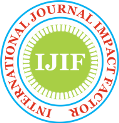The SARS-CoV-2 omicron variant of concern: characteristics, potential impacts and prevention
Abstract
The 2019 Coronavirus Disease (COVID-19) has posed a significant danger to worldwide public health. A novel severe acute respiratory syndrome coronavirus 2 (SARS-CoV-2) variant, B.1.1.529, was recently discovered in South Africa, causing a dramatic surge in COVID-19 patients. The World Health Organization identified B.1.1.529, known as Omicron, as a variant under monitoring (VUM) on November 24, 2021 (WHO). The Omicron variant was pronounced a variant of concern two days later (VOC). This variant contains a large number of mutations, including 15 in the spike's receptor-binding domain (RBD). The Omicron version also has multiple alterations in common with the preceding VOC Alpha, Beta, and Gamma variants, which sparked widespread worry regarding viral transmissibility, pathogenicity, and immune evasion. We reviewed the finding and features of the Omicron variation, compared the spike mutations in the five VOCs, and discussed potential prevention and mitigation techniques.
Downloads
Copyright (c) 2021 Peter Ngulube, Digvijay Pandey

This work is licensed under a Creative Commons Attribution 4.0 International License.
The Authors retain copyright (full ownership) to their content published in the Journal. We claim no intellectual property rights over the material provided by any User in this Journal. However, by setting pages to be viewed publicly (Open Access), the User agrees to allow others to view and download the relevant content. In addition, Open Access articles might be used by the Provider, or any other third party, for data mining purposes.
The Provider reserves the rights in its sole discretion to refuse or remove any content that is available via the Website.



















